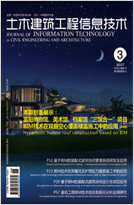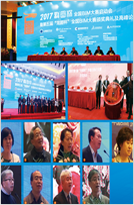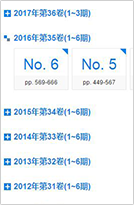2018, 10(3): 91-96. doi: 10.16670/j.cnki.cn11-5823/tu.2018.03.17
上海某宾馆基坑工程监测分析
上海市工程建设咨询监理有限公司,上海 200043 |
Analysis on Foundation Pit Monitoring of A Hotel in Shanghai
Shanghai Project Management Co., Ltd., Shanghai 200043, China |
引用本文:
曹晏. 上海某宾馆基坑工程监测分析[J]. 土木建筑工程信息技术,
2018, 10(3): 91-96.
doi: 10.16670/j.cnki.cn11-5823/tu.2018.03.17

Citation:
Cao Yan. Analysis on Foundation Pit Monitoring of A Hotel in Shanghai[J]. Journal of Information Technologyin Civil Engineering and Architecture,
2018, 10(3): 91-96.
doi: 10.16670/j.cnki.cn11-5823/tu.2018.03.17

摘要:基于实际工程案例,通过分析大量现场实测的监测数据得到基坑施工过程中土体深层水平位移、支撑轴力以及地面沉降等的变形规律:实际施工过程中,土体的深层水平位移随着基坑开挖的深度加大,也在不断增大,并且最大深度所处位置也在不断下降,曲线呈现“大肚子”的形式;支撑轴力也随着基坑的施工进行不断增大,加设的第二道支撑有效地缓解了第一道支撑的轴力,但是,两道支撑轴力都以较快的速度增长直至基坑挖土施工结束;地面沉降、周边的管线位移也随着基坑开挖持续加大。本工程的结论可以为类似的工程提供借鉴。
Abstract: Based on a practical engineering case study, this paper concludes the deformation law during foundation pit construction of deep soil horizontal displacement, supporting axial force and ground settlement, through analyzing numerous field measured monitoring data. In the actual construction process, the deep horizontal displacement of the soil is increasing with the depth of the excavation, and the position of the maximum depth is also dropping, with the curve in shape of a big belly. The axial force of the supporting shaft also increases with the construction of the foundation pit, and the additional second support effectively relieves the axial force of the first support. However, the axial force of both supports increases at a rapid rate until the completion of project. Both the surface subsidence and the displacement of surrounding pipeline also keep increasing with the construction progress. The conclusion of this paper can provide references for similar projects.
计量
- PDF下载量(31)
- 文章访问量(2108)
- HTML全文浏览量(1301)















